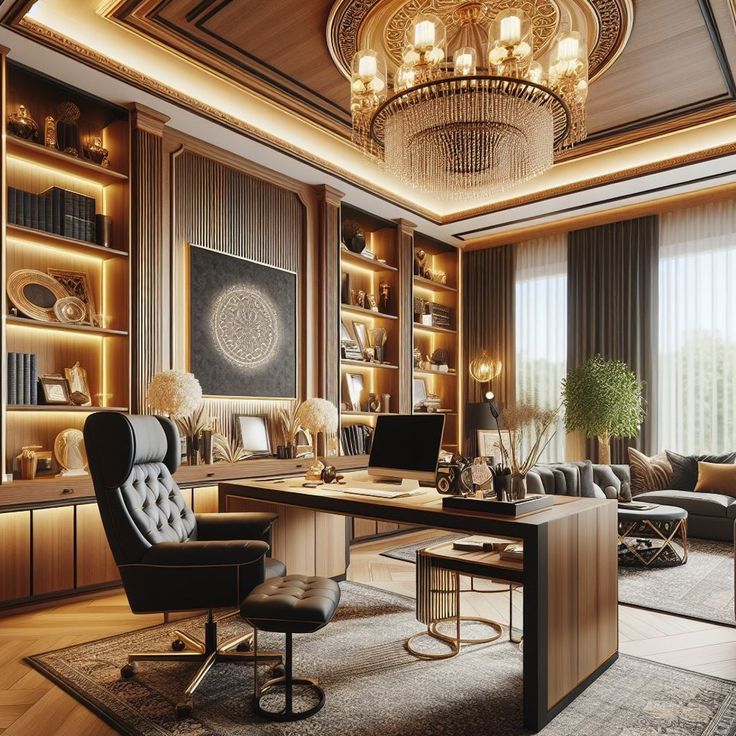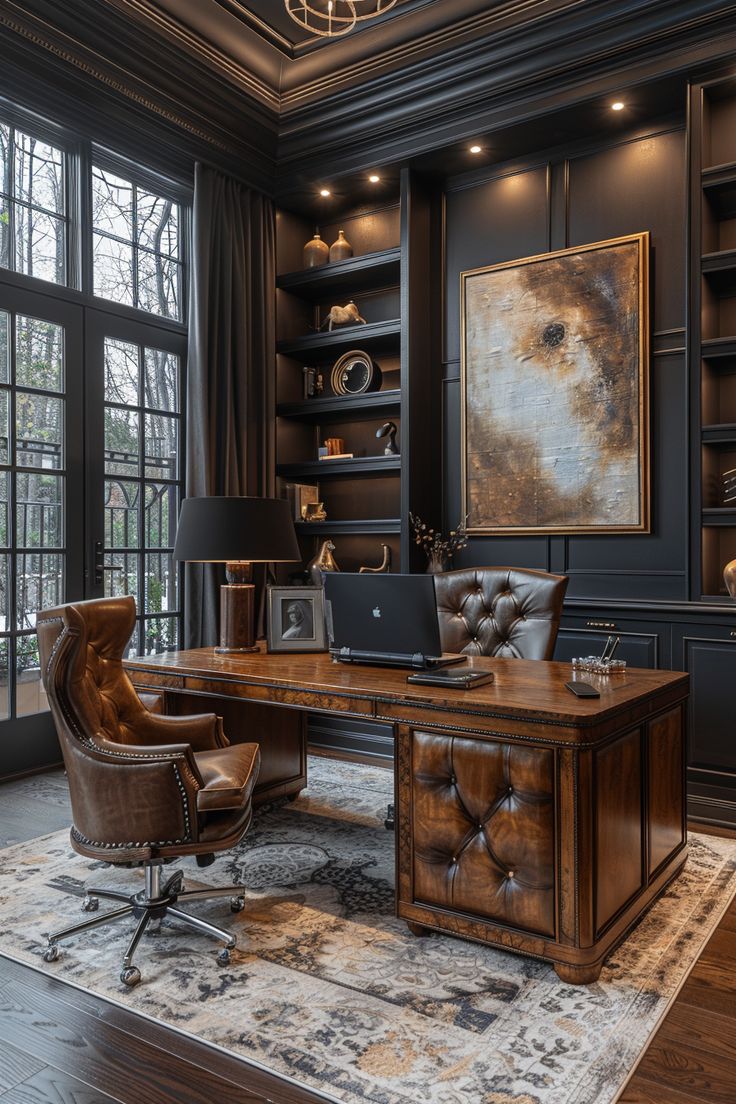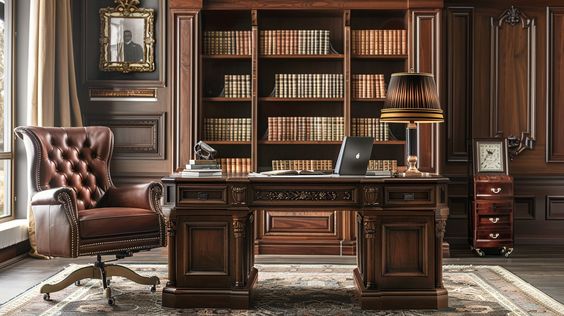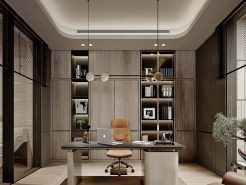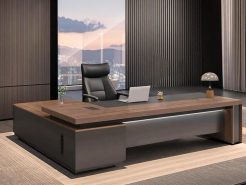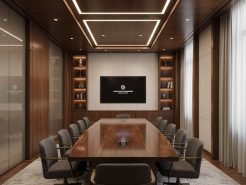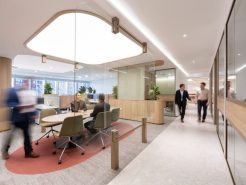President’s office – When talking about neoclassical style, one can easily imagine that it is a warm space with the breath of a settled time. For the president’s room designed in neoclassical style, it is not only a symbol of time but also a testament to the enduring strength, will and class beyond all time. It clearly shows the harmony between the old and the new in a classy style that is not easily confused. The following article will help to better understand the president’s room in neoclassical style – the new definition of power and class.
The Neoclassical Style of the President’s Office: A New Definition of Power and Class
1. What is a President’s Office in Neoclassical Style?
The term “neoclassical” can easily be understood by breaking down the two words: “neo” meaning new, modern, and progressive, and “classical” referring to traditional, timeless, and vintage elements. The fusion of these two concepts implies a style that blends classic elements with modern touches. However, in the neoclassical style, some intricate details are simplified to create a sophisticated and elegant atmosphere that retains the beauty of the past while staying contemporary.
For a president’s office designed in this style, the room not only symbolizes the passage of time but also represents enduring strength, willpower, and timeless class. It embodies the seamless blend of old and new in a distinguished, unmistakable style.
This article will provide a deeper understanding of the president’s office in the neoclassical style – a new definition of power and class.
2. What Are the Functional Features of a President’s Office in Neoclassical Style?
The office of a company’s “captain” is no longer just a workspace; it reflects the class and success of the individual. As such, it demands strict standards for comfort, convenience, and functionality, helping the president perform tasks quickly and efficiently. Below are some key functional aspects of a neoclassical president’s office:
Working Area:
The president’s workspace requires a spacious, airy environment with a vantage point to easily overlook the office. The desk and chairs, designed with intricate details, embody a sense of timeless elegance, but they must also be comfortable and ergonomically designed to ensure long hours of work are pleasant.
Secretary/Assistant Area:
Given the nature of the secretary’s role, their desk should be positioned in a convenient, easily accessible area to support the president’s work effectively. It might be placed near the entrance to facilitate client reception and administrative tasks.
Guest Reception Area:
The guest reception area is equipped with a long sofa, designed with sophistication and fine stitching. A luxurious coffee table with intricate details creates an elegant atmosphere, ensuring smooth interactions with partners and clients.
Meeting Room Area:
Modern, smart technology is often prioritized in the meeting room, with devices for scheduling meetings and organizing work calendars. File management and document sharing systems must be efficient and responsive to ensure smooth communication during meetings.
Relaxation Area:
Given the leadership role, the president often receives clients and partners. Thus, designing a small relaxation zone within the office allows for short breaks to recharge during a busy day.
Decorative Area:
Using high-end wood cabinets, intricately carved by skilled artisans, elevates the office’s elegance and reflects the leader’s unique personality. Additionally, awards and accolades may be displayed in this area to add aesthetic value and showcase the leader’s achievements and dedication over time.
3. What to Keep in Mind When Designing a Neoclassical President’s Office
Space Design:
The president’s office in the neoclassical style should be spacious and warm, blending modernity with the timeless beauty of classical design. The room should not be overly ornate like traditional classical styles, but instead highlight the elegance of bygone eras through fine, delicate detailing.
In neoclassical design, wall and ceiling elements play a key role in creating a dignified, refined appearance. Below are some key features of the walls and ceiling in this style:
Walls:
Walls are often adorned with molding or raised paneling to create rectangular or square frames, along with classic patterns. These design elements help break up the monotony and add a refined touch.
Decorative patterns with strong classical influences enhance the artistic quality of the space, giving it a vintage yet sophisticated look.
Ceiling:
Similarly, the ceiling in a neoclassical style is often embellished with raised details, molding, or geometric shapes that add balance and harmony to the space.
A central ceiling medallion with intricate designs, often where a chandelier is placed, serves as a focal point. Chandelier lighting in a classic style contributes to a warm, elegant glow, enhancing the luxury of the room.
Lighting:
Lighting is an essential element in designing a functional office. It plays a key role in setting the tone and atmosphere of the space. Proper lighting ensures both functionality and visual appeal.
Color Palette:
In neoclassical design, cool tones such as gray, black, and wood brown are commonly used to accentuate luxury and opulence. However, lighter shades like white, cream, light gray, and pastel tones can be incorporated to create an elegant, soothing atmosphere.
Materials:
Stone:
Natural stones like granite and marble are often used for flooring, countertops, and walls to add a glossy, luxurious feel to the space.
Wood:
High-quality natural wood is frequently used in neoclassical offices for furniture, paneling, and flooring. Wood creates a warm, classic look and is durable and easy to carve into intricate patterns.
Velvet, Silk, and Upholstery Fabrics:
Neoclassical design also features soft, luxurious fabrics such as velvet and silk. These materials are used to upholster sofas, curtains, and cushions, contributing to the room’s elegance and regal charm.
Glass and Crystal:
Small details like crystal chandeliers and glass vases enhance the overall elegance and glamour of a neoclassical space. These items help elevate the atmosphere, adding sparkle and refinement.
When these materials are combined, they create a sophisticated yet warm and inviting space that embodies both timeless elegance and modern luxury.
In Conclusion:
The president’s office in neoclassical style is a perfect blend of refined classical beauty and modern functionality. It creates a dignified, elegant workspace that reflects the power and leadership of the “captain” of the company, offering an atmosphere of authority and prestige that inspires respect.
Learn more about other design styles for the president’s office: Here
PROCE – LUXURY OFFICE SOLUTIONS
Website: https://proce.vn/
YouTube: https://www.youtube.com/channel/UCmHTphVmf6cD9N9nwbb5kvA
Facebook Fanpage: https://www.facebook.com/vanphongnhapkhauProce
Google Business: https://business.google.com/dashboard/l/15115233216900975876
LinkedIn: https://www.linkedin.com/company/74359718/admin/
Hotline: 090.115.6767
#high_class_office_funiture
#high_end_office_funiture
#Chairman_Office_design
#Chairman_Office_interior
#Chairman_Office


